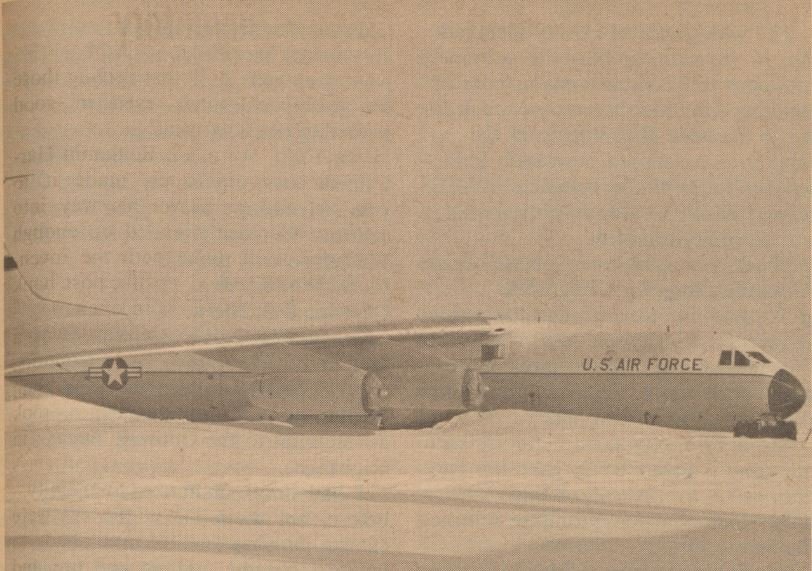In the early months of 1978, history-making blizzards struck the U.S. Midwest and Northeast. Exchanges across the regions were among those affected. But they found ways to offer support and get the job done.
Blizzards aren’t unusual in the Great Lakes area or the Ohio River Valley, but for three days beginning on Jan. 25, 1978—46 years ago this week—Ohio, Illinois, Indiana, Michigan and Kentucky were hit by a winter storm so strong that it’s still considered one of the worst to ever hit the region.
“The Great Blizzard of ’78” affected numerous Exchanges—and hit during inventory season. Snow drifts of eight to 10 feet were reported in some locations.
At K.I. Sawyer Air Force Base in Michigan, snowfall amounts were measured at 20 inches. But nearly a quarter of the BX’s 100 associates were able to make it to work. Fifteen of the associates who reported to the store wound up staying there overnight. Associates assisted stranded motorists and helped one another dig cars out of snow drifts. The photo at the top of the story shows a K.I. Sawyer custodial worker clearing snow from a BX entrance.
Great Lakes Area Exchange Accounting Manager Gary Smith and Retail Manager George Owens helped some associates make it home via snowmobile. Owens also took a snowmobile ride to deliver hot food to K.I. Sawyer gate guards.
At Chanute AFB in Illinois, it was military personnel who delivered the food, as security police brought box lunches to BX associates.
Exchange associates at Ohio’s Wright-Patterson Air Force Base Exchange, where it merely rained on the night of Jan. 25, were able to make it home that night. Getting to work the next morning was another matter; snow accompanied by 60 mph winds fell on the Dayton-area base.
Wright-Pat Main Store Manager Dorian Charbonneau, who was born in Vermont and had lived in Michigan, knew how to drive in the wintry weather. His commute took the usual amount of time—and when he got to the store, he found that he was the only one there. Others trickled in, including a service station manager whose normally 15-minute commute took him 3⅓ hours. Even Charbonneau needed assistance getting home, because his car wouldn’t start at the end of the workday.

At Rickenbacker Air Force Base south of Columbus, four Exchange associates were stranded for two nights. Despite a power outage, they continued to conduct inventory, using flashlights and sleeping in shifts. Associates in Oakdale, Pennsylvania, weren’t stranded, but they also had to conduct inventory without power or lights.
Richard O’Meara, the manager of the Exchange at Fort Benjamin Harrison in Indianapolis, had to shovel his way into the store, then round up enough associates to conduct inventory. He also picked up the post bank manager so that the bank could open.
At Fort Campbell on the Kentucky-Tennessee border, 30 snowbound associates spent the night of Jan. 26 in the main store or the cafeteria. They also continued with inventory and had the store open by 10 a.m. on Jan. 27.
Fort Knox, about a 150-mile drive northeast of Fort Campbell, had already endured bad weather for several weeks. One personnel assistant was stranded at the Exchange for three days. Eleven other associates were marooned at a troop store, where the heat went out. They took jogging breaks between inventory stints to keep warm. Two snack bars remained open during the entire storm to serve the military community.
On Feb. 6, not long after the Midwest blizzard, New England and other areas of the Northeast were hit by what still stands as one of the region’s worst snowstorms of all time. President Carter sent troops to the Boston area from Forts Bragg, Hood and Benning (now Forts Liberty, Cavazos and Moore) to the area, augmented by personnel from Fort Belvoir, Fort Polk (now Fort Johnson) and Fort Devens. The exercise was dubbed “Operation Snow Blow.”
The Exchange received a request to support these troops as they worked to clean up after the disaster. Within 24 hours, New England Area Exchange (NEAX) associates, led by Fort Devens Exchange General Manager James H. Meyer, worked closely with troops from 26th Yankee Division of the National Guard to set up two imprest funds—Exchanges operated by military personnel—to get much-needed merchandise to the troops.
C.R. O’Donnell, NEAX retail operations manager, developed a stock assortment consisting of personal items and snack food. Two trucks with military drivers and crews were loaded with the merchandise and sent on routes encompassing the perimeter of the Boston area.
Only hours after it was delivered, the merchandise was depleted. Soldiers contacted Meyer to request that an identical order be delivered the next morning. The Fort Devens Exchange team had an order ready for pickup by 7 a.m.
The Exchange also supported troops by furnishing movies that the troops could watch during their rare breaks. The movies were shown in several armories set up to house the 2,000 troops. The troops frequently thanked and complimented the Exchange’s support during “Operation Snow Blow.”
Source: Exchange Post archives



Leave a Reply